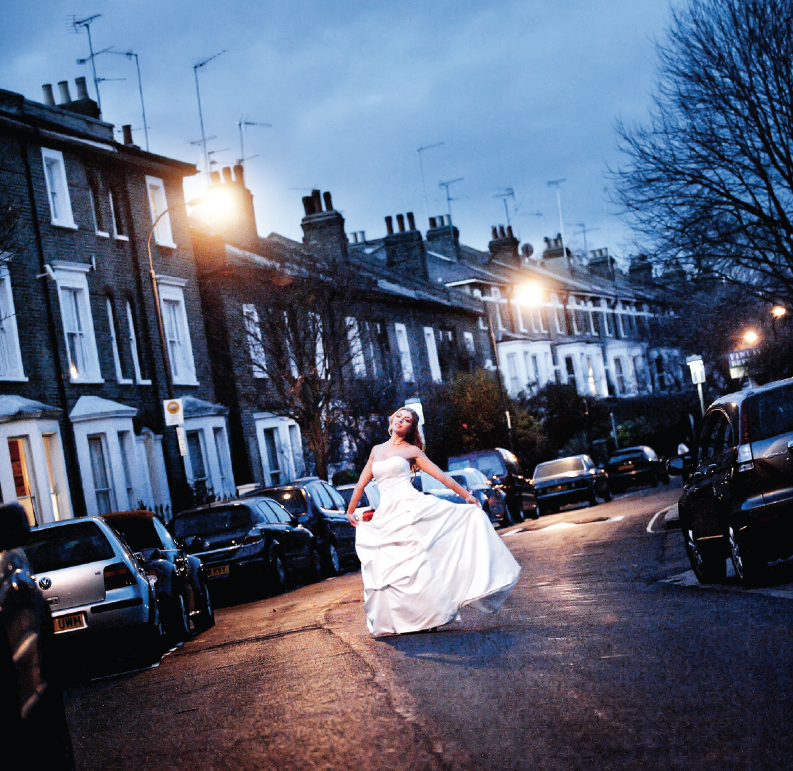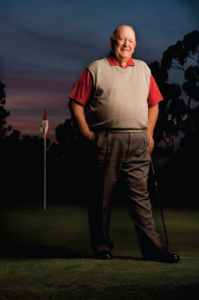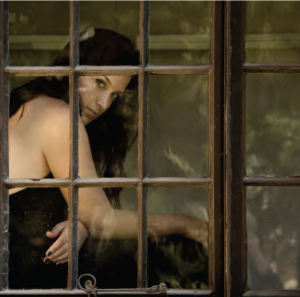
In most cases, making an outdoor portrait involves mixed light sources and demands greater control of both exposure and lighting. Outdoor lighting with electronic flash can be daunting. There are many means for balancing the light output of a strobe with the ambient light available in the scene. Few, however, are consistent from shot to shot. This is the case with battery pack generators or speedlights. Speedlights, often described as the lights that can be attached to the hot shoes of most modern cameras, have at least two settings that allow the photographer to balance the flash and ambient light—manual and through-the-lens (TTL). Regardless of the type of lighting equipment, at present, accurate exposure is more readily achieved with the use of manual settings.

Photo – Tim Mantoani
The manual mode allows the photographer to adjust the power output setting on the flash, which can then be balanced with the available ambient light. Today there are no in-camera metering methods for this technique, so most photographers depend upon some combination of viewing the LCD screen on the back of the camera and using clipping indicators or histograms to give them some idea of proper exposure. However, many modern cameras have an advanced method of TTL metering. This uses the camera’s internal metering system and onboard computer to determine correct exposure and the balance of both the ambient and the flash exposures. Though these onboard systems bring the exposures close to optimal, there are situations where TTL settings are inconsistent. Ultimately, many photographers use the LCD screen or clipping indicators or histograms to make decisions and adjust EV settings to achieve the look they want. With the above in mind, we recommend using a handheld meter to bring consistency and accuracy to the process.

Photo – Joyce Wilson
New generation meters have introduced methods of determining ratios between flash and ambient light. Along with the other useful information that the meters provide, they now show the relationship between the intensity of the flash and the ambient light. Even with a handheld light meter, however, determining ratios between ambient and flash lighting can be complicated. Ambient exposure in photography is determined by the relationship between shutter speed and aperture. Flash exposure is controlled in-camera by the aperture or by adjusting the power output of the flash. Determining the correct balance between flash and ambient exposures has always been a dance between these two exposure scenarios.
To utilize the available technology and achieve both the proper exposure and desired look in a portrait, several steps are required. First, the ISO setting on the meter needs to be properly aligned with your camera. Next, put the meter in any one of the available strobe modes. Turn on the flash, point the dome of the meter back at the camera, and set off the flash. With the newer meter technology you can measure what percentage of your exposure is coming from the flash. Knowing the relationship of electronic flash and ambient illumination will allow you to determine the key-light source and establish a desired lighting ratio.
In a situation where electronic flash is used with ambient light, the flash can be the key or fill light depending on the direction of the light and the strengths of the electronic flash and ambient light source(s). Using a handheld meter allows you to adjust the power of the electronic flash to control the ratio, regardless of whether the flash is the key or fill light.

Photo – Stacy Pearsall
This ability to choose whether the ambient light or electronic flash will serve as the key light gives you great flexibility in determining the style of your portraits. By using a handheld meter and changing the power settings on the electronic flash you can control the ratios in your portraits and determine the style and look of the portraits by adjusting which source—ambient light or electronic flash—will be dominant.
Want to learn more? If you liked this article, then you’ll definietly enjoy The Portrait, 2nd Edition by Glenn Rand and Tim Meyer
